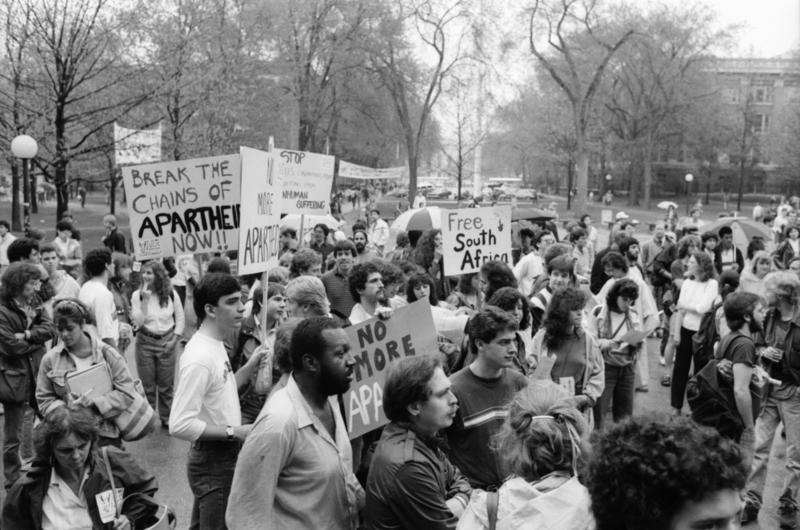IV. The Struggle Continues: Renewed Protest and National Action: 1984-1986
Following the Regents’ April 1983 decisions to divest 90% of the University’s stockholdings in companies operating in South Africa and challenge Public Act 512, student anti-apartheid protest slowed on campus. With most of the stocks already divested and the remainder tied up in the University’s legal battles with the state, there were few easy targets for the protesters to go after. However, anti-apartheid sentiment continued to grow nationally. In the spring of 1985, student activism exploded again. Divestment protests at Columbia University and the University of California – Berkley grew rapidly and started gaining national attention. Eventually, these protests spread to college campuses across the nation.
The University of Michigan was caught up in this tide and, aided by newly formed campus groups like the Free South Africa Coordinating Committee (FSACC), larger anti-apartheid protests began reappearing on the Diag. Students at U of M participated in nationally coordinated “Weeks of Action Against Racism and Apartheid.” Activist groups began building shanties, modeled after the dwellings of many black South Africans, on the Diag to draw constant attention to the suffering inflicted by apartheid. Eventually, the scope of these protests expanded to include other issues, like the granting of a Michigan honorary degree to Nelson Mandela, racism on campus, and displeasure with some of President Reagan’s policies.

